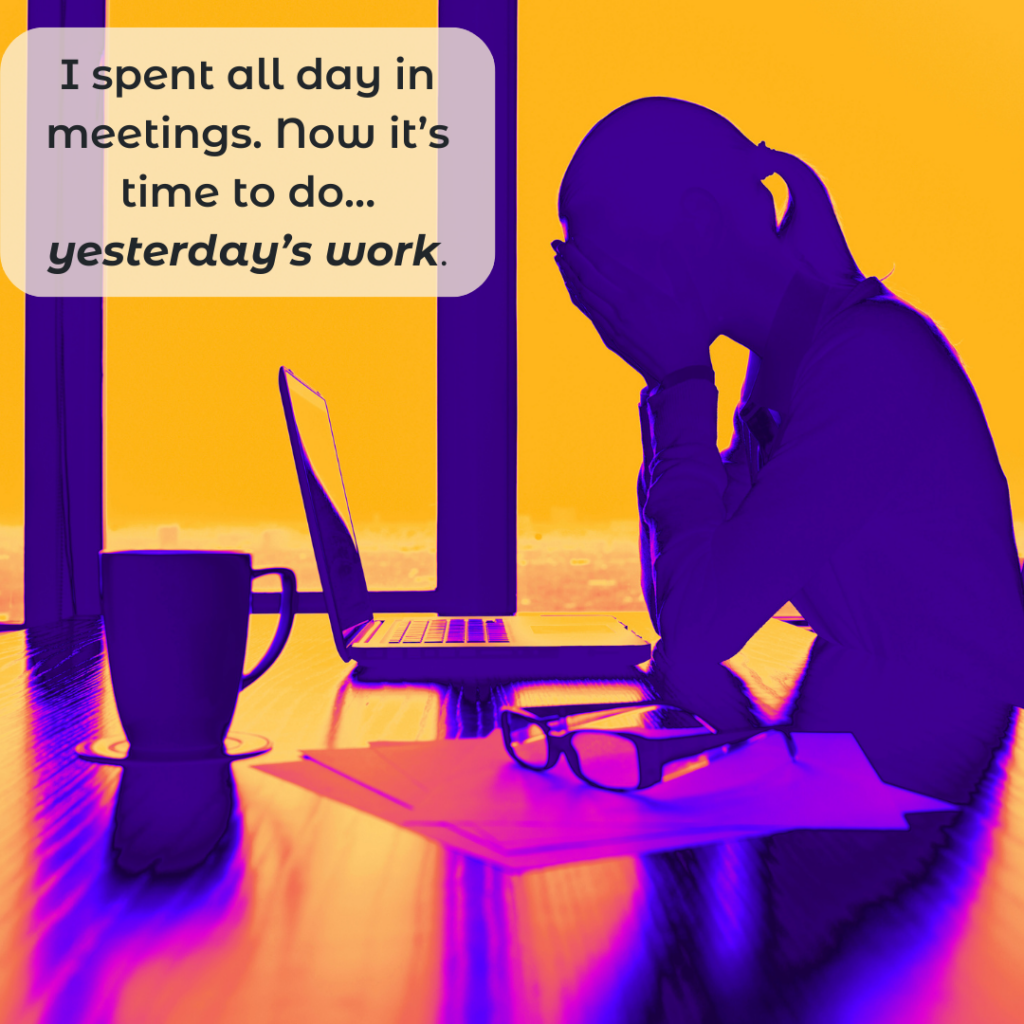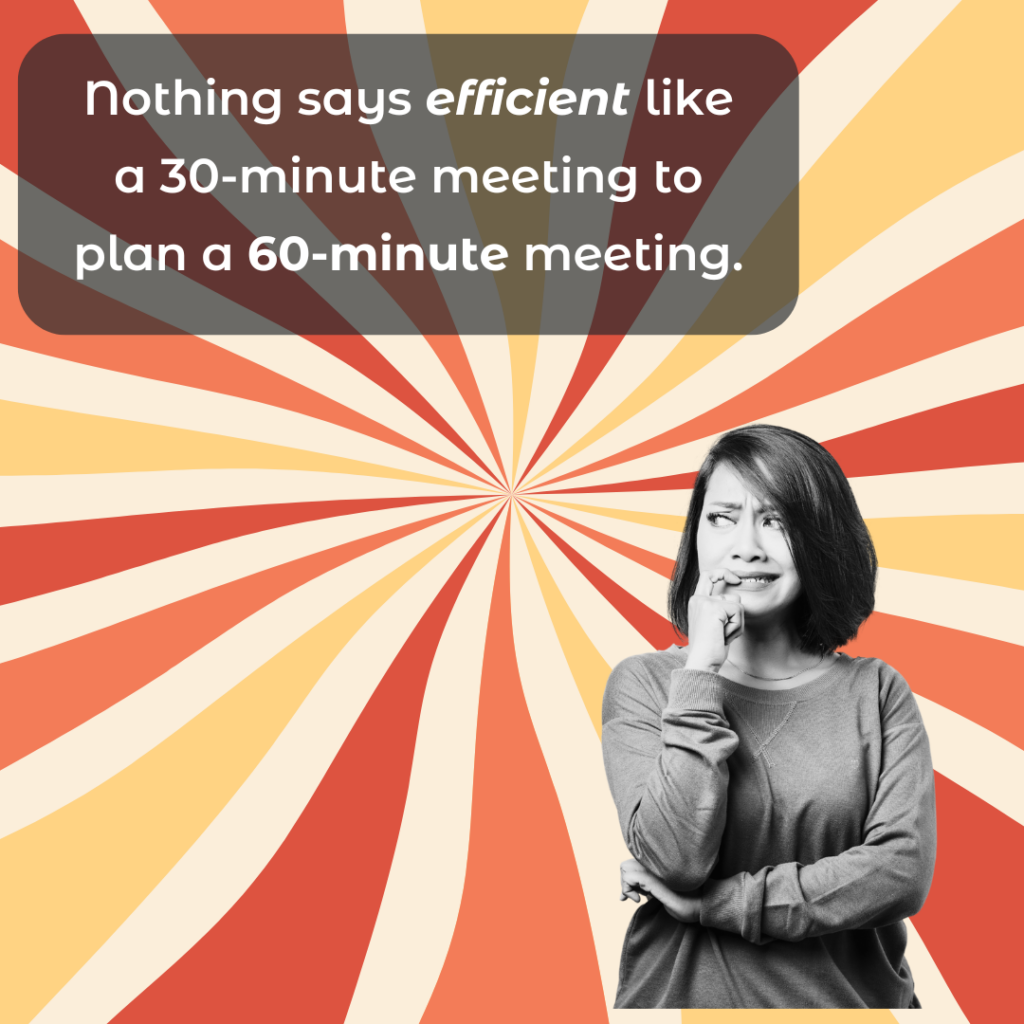Is your calendar packed with meetings? Does it push your “real work” to evenings and weekends? You’re not alone–and chances are, you’re a high performer. Cross, Rebele, and Grant found in Harvard Business Review that top collaborators face a tough paradox. The better you are at your job, the more meetings you have to join.
The Hidden Tax on Your Talent
A surprising fact may confirm your thoughts: In many organizations, only 3-5% of employees create 20-35% of all valuable collaborations. As a high performer, you’ve likely become the go-to person for everything from troubleshooting to decision-making—and your calendar shows it. Time management feels impossible.
Even more eye-opening? Half the time, your meeting overload isn’t recognized as the valuable contribution it is. There’s a mismatch: Many organizations hope for collaboration but reward individual achievement.

Warning Signs You’re Approaching Collaborative Burnout
According to the research, watch for these red flags:
- You are a bottleneck: Your colleagues can’t move forward without your input
- You’re spending more than 80% of your day in meetings, leaving little time for focused work
- You feel that meeting requests have increased by 50% or more compared to a few years ago
- Your performance reviews and milestones aren’t capturing your collaborative contributions
Take Back Your Time: 5 Actionable Steps
As a high performer, here’s how you can protect your time while maintaining your impact:
1. Propose a “minimum viable meeting” structure. In Three Ways to Build a Culture That Lets High Performers Thrive, the authors suggest a simple meeting plan for your team:
- Prioritize on Monday.
- Solve problems midweek.
- Call “pencils down” on Friday to review completed tasks.
This gives everyone—including you—more time for actual execution.
2. Set clear communication boundaries. Cross and others say we need to set stronger boundaries around incoming information flow. With Slack, Teams, email, phones, and urgent projects, this is tougher than ever. Still, the advice is:
- Blocking specific focus time on your calendar for deep work
- Creating a clear system for urgent vs. non-urgent requests
- Establishing “office hours” for collaboration rather than being constantly available
3. Request Changes to Your Performance Review Metrics. Since teamwork often gets overlooked, ask your manager to add metrics. This way, your collaborative efforts can be recognized in the next review cycle.
Specifically, propose concrete measures like:
- Mentorship impact:
- Number of team members who received coaching that led to skill development or project completion
- Knowledge sharing:
- Documentation, guides, or process improvements created that reduced questions or accelerated onboarding
- Decision facilitation:
- Cross-functional decisions unblocked through your involvement
- Problem-solving contributions:
- Number of critical issues resolved through your input in meetings
4. Delegate collaborative tasks. Figure out which meetings need your input and which you can delegate. High performers can set up problems for others to solve and free more time on their calendars.
5. Focus on energizing collaborations. Not all collaborative work is equally draining. Invest in value-added activities that you find energizing rather than exhausting. Restructure your involvement accordingly.

Advocating for Systemic Change
Individual tactics are important, but to address meeting overload, we need to change the system. To push for broader change:
- Frame boundaries as performance boosters: “With three hours of daily focus time, I can deliver that project ahead of schedule.”
- Find allies among other overloaded high performers and propose solutions together.
- Suggest a team experiment with meeting-free days or time blocks and track the results.
- Pitch a “collaboration budget” limiting total meeting hours per week.
- Train managers to run effective asynchronous meetings to meet less and get more done.
Remember: organizations that protect their top talent’s time keep that talent longer. By advocating for change, you’re not just saving yourself—you’re improving the workplace for everyone.
The Bigger Picture
These findings are intriguing because they go against common sense. What gets rewarded isn’t always the most valuable. Also, those we appreciate the most may actually be the ones we burden the most. Organizations are losing their best talent by unintentionally punishing them with collaboration overload.
These high-achiever meeting efficiency techniques will help you protect your time and energy. You also set a good example for better teamwork across your organization. When high performers succeed, they lift up their colleagues and help their organization shine.
Try implementing just one of these strategies this week. After all, your time is too valuable to waste.✨
